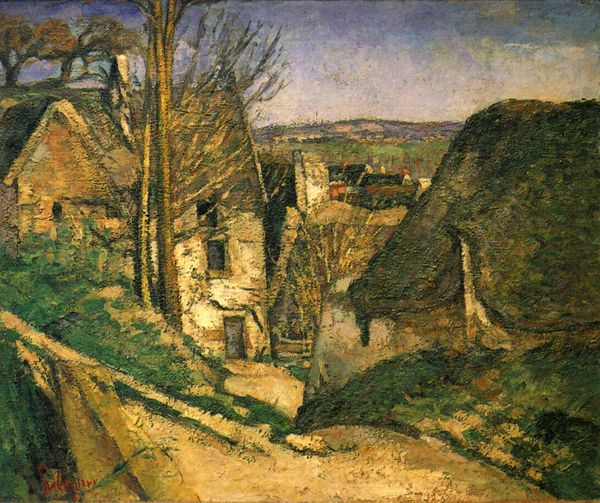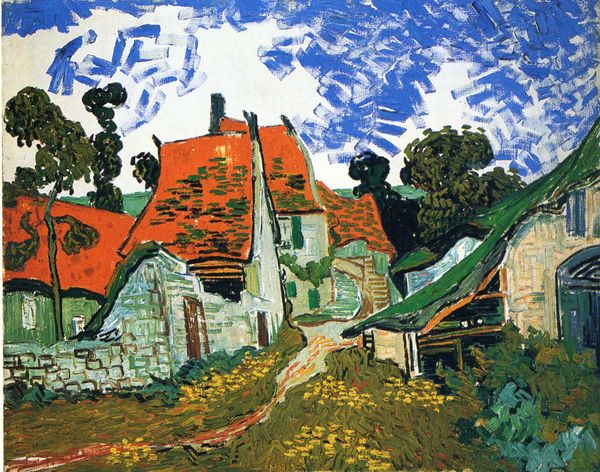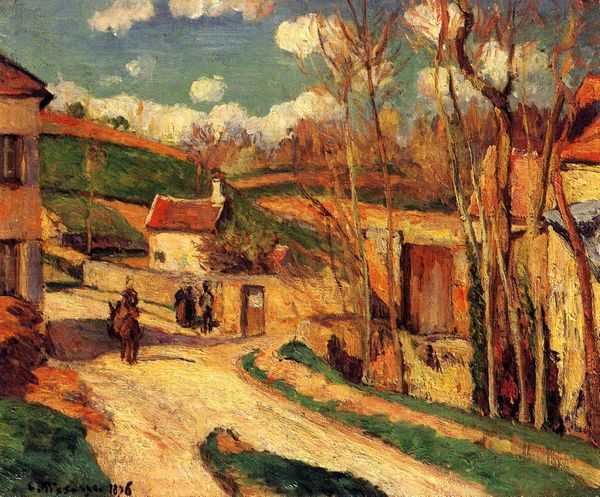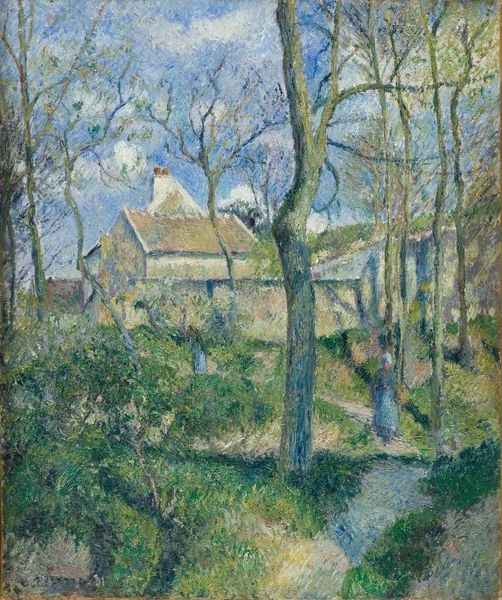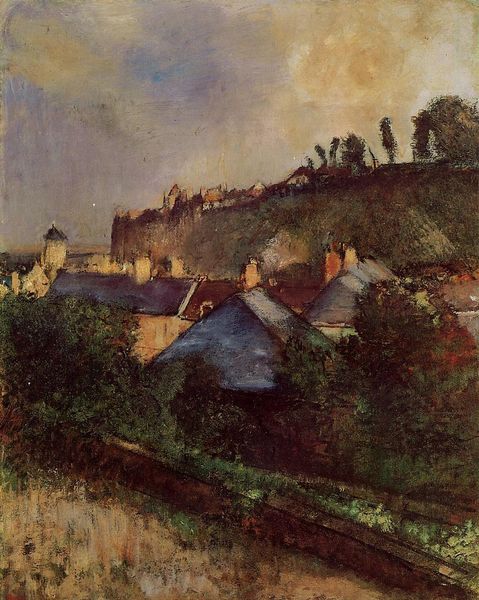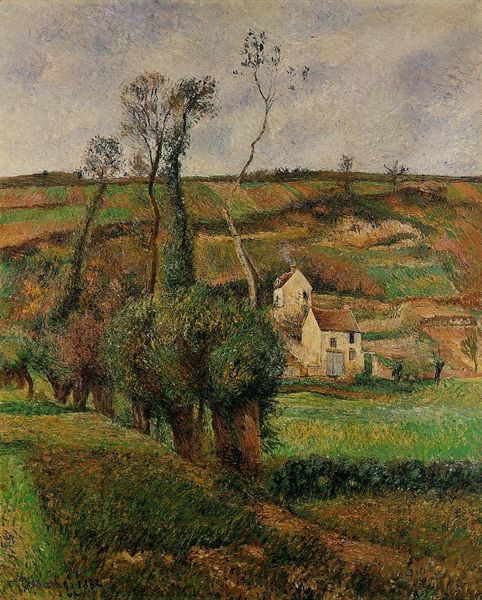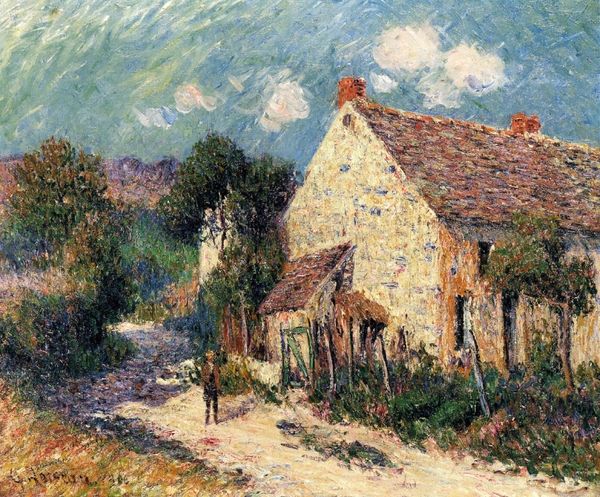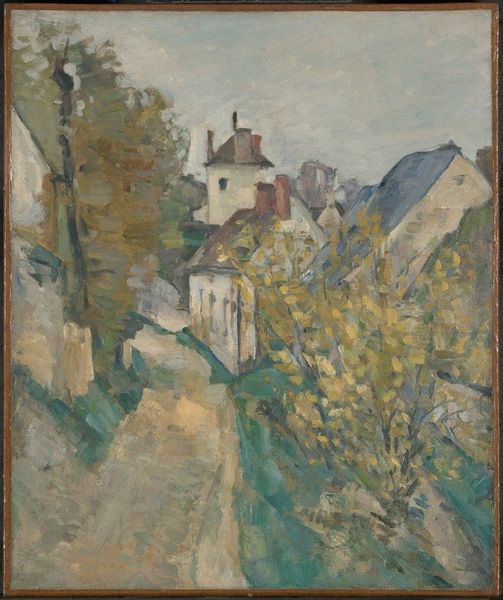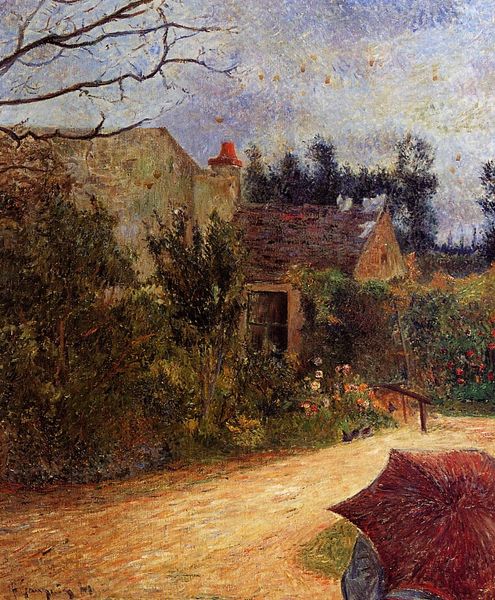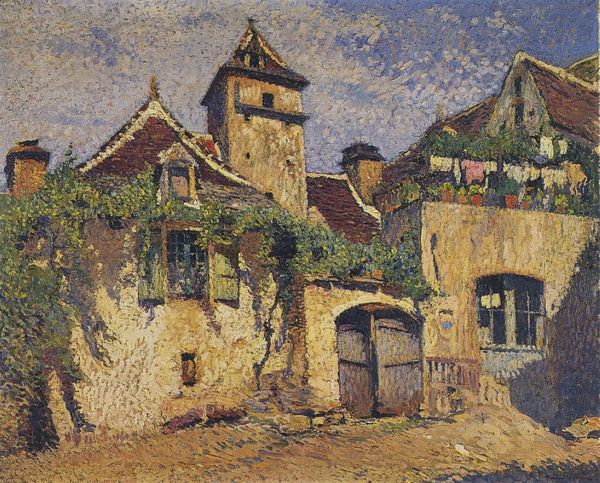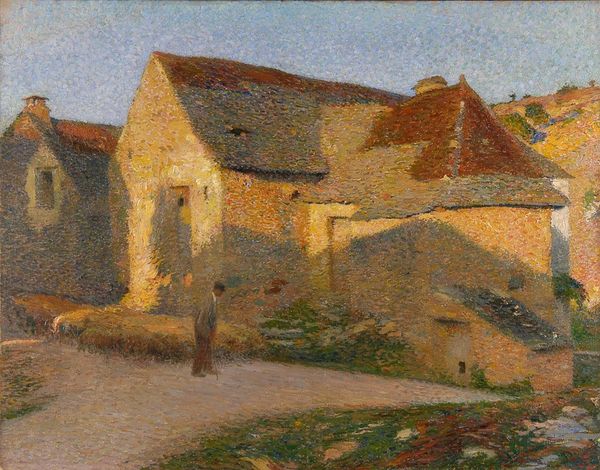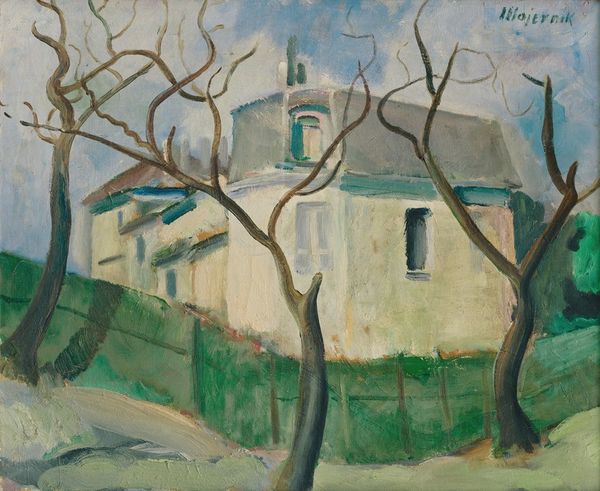
plein-air, oil-paint
#
tree
#
impressionism
#
impressionist painting style
#
plein-air
#
oil-paint
#
landscape
#
impressionist landscape
#
oil painting
#
watercolor
Dimensions: 66 x 55.5 cm
Copyright: Public domain
Curator: Paul Cézanne painted "The House and the Tree" in 1874, an oil on canvas currently held in a private collection. Editor: The first thing that strikes me is the raw, almost unsettling mood. The bare branches of the tree reach out like skeletal fingers. It gives a stark feel, despite the warmth in the light falling on the house. Curator: Well, that unsettling quality is central to Cézanne's project, in a way. He's dismantling traditional perspective, refusing to give us easy visual access or spatial coherence. Notice the way the house is structured and how its planes relate—or rather, don't quite relate—to one another, particularly at the roof line and with that strangely-placed chimney. Editor: I see that. There's this tension between the domestic, almost idyllic subject matter – a house in the countryside – and the fractured composition. It disrupts any easy reading of peaceful domesticity. The dark blues that fill in some of the windows really deepen that sense of unease too. Almost like eyes, or voids, in an otherwise solid structure. Curator: Exactly. Cézanne was wrestling with the representational conventions of his time. Think about the Impressionists; they were capturing fleeting moments, immediate sensations. Cézanne, though, was interested in the underlying structure, the more permanent essence, of what he saw. "The House and the Tree" really is pushing at the boundaries of representation at that point in time, 1874. He presents us not with a perfect reflection, but a construction. He makes a clear choice about representing spatial depth in a new way. Editor: So, it's a kind of deconstruction of what "house" even means, visually, conceptually. The tree further emphasizes the precarity, and suggests the vulnerability of dwelling – exposing our relationship to the nature that both shelters and threatens us. Curator: That reading makes a lot of sense, I think that Cézanne is always playing with this tension between our attempts to control and shape our environments versus the ever-present, and untamable power of the natural world. Editor: Seeing the painting again through the lens of social power I better understand its continuing impact, because it is about control, and I value seeing the piece as more challenging to that, even now. Curator: It continues to resonate. The play with form, perspective, and our social construction of home feels more relevant than ever, to me.
Comments
No comments
Be the first to comment and join the conversation on the ultimate creative platform.
